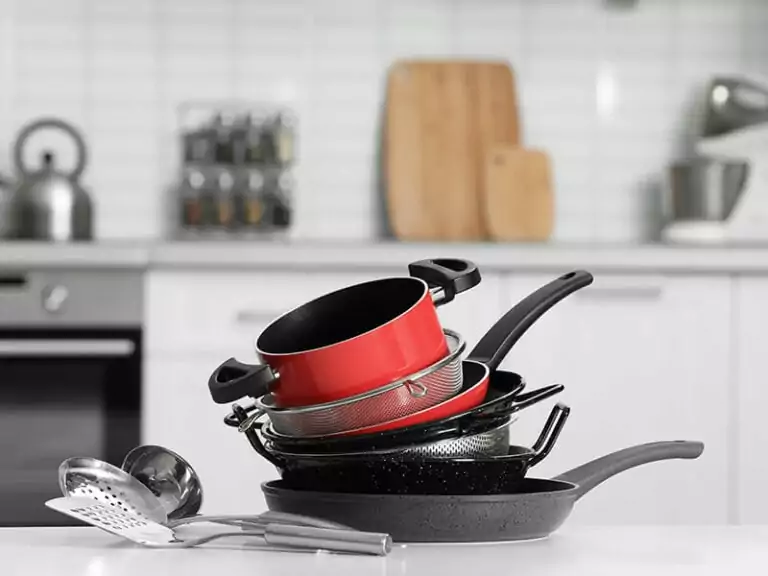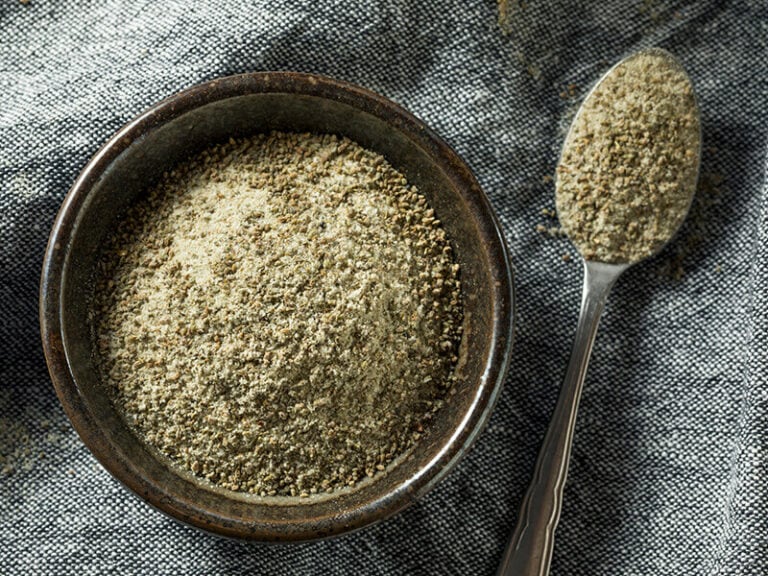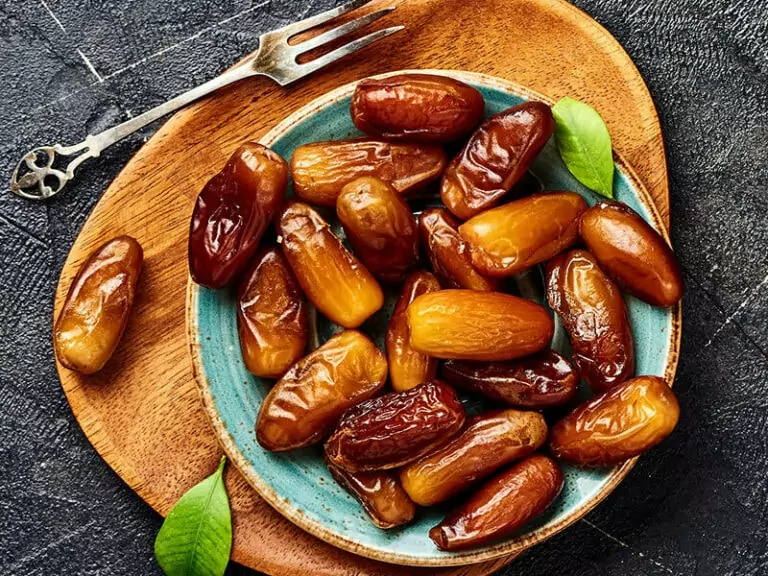“Does salt expire?” is a universal query many people usually ask but rarely get the answer to. Due to its properties, you can only use a small amount of it every time you cook as a seasoning.
Salt comes in large packaging, and no one can use that in one sitting. But is it safe to leave the salt there for a year, 3 years, or even 10 years? It depends on the type of salt that you have.
In this article, I will discuss the salt’s “expiration date”, or at least that’s what you call it. Moreover, you can also learn how to store salt and what to do with old salt.
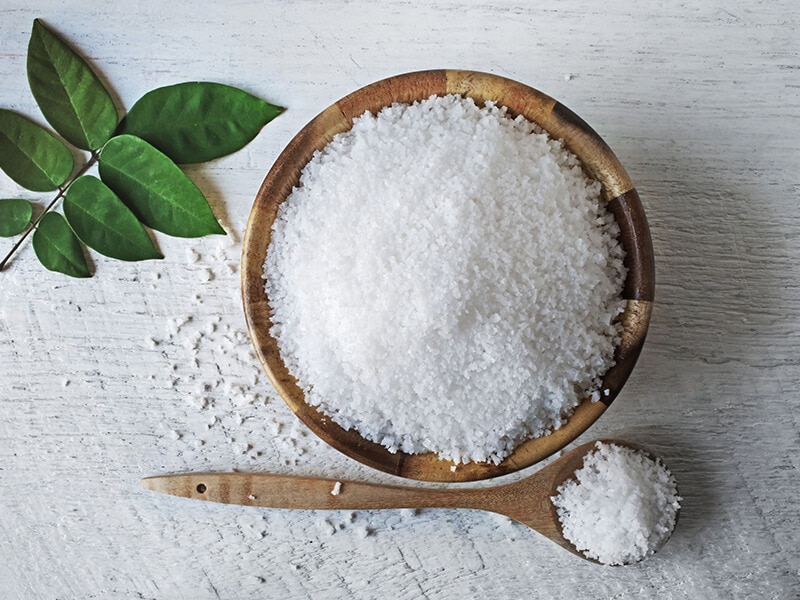
Salt – Small But Mighty
Salt is a basic ingredient that everyone has on hand. It provides sodium and chlorine ions for your body. While its size can be humble, you may experience many consequences if you don’t include it in your daily diet.
Sources Of Salt
The salt in nature comes from two main sources: seawater and rock salt. Basically, they have the same roots. The only difference is that rock salt has already formed into a solid.
Seawater
Seawater contains chloride and sodium ions. They account for over 90 percent of dissolved ions in it. The salinity of seawater is between 33-37 grams per liter (1).
Salt forms when seawater dries up in the sunlight and the wind. Once the water evaporates, it leaves large crystals. To make salt on an industrial scale, people captivate seawater in concentrating pools, allowing it to evaporate efficiently.
The production of sea salt only happens in low rainfall areas. Therefore, countries with dry climates, such as Australia and the Mediterranean, are the major sources of sea salt.
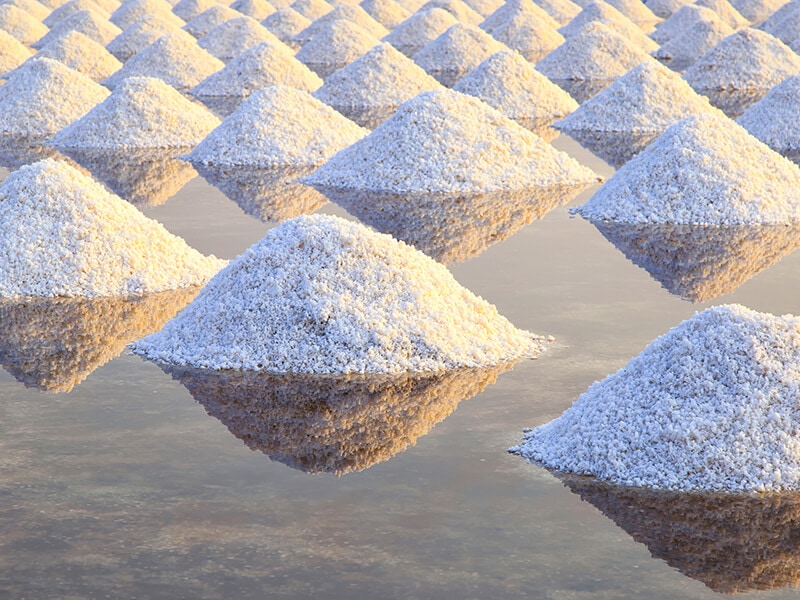
Rock Salt
Mined salt is extracted from natural salt deposits. When these large bodies of salt have nowhere to flow, they dry up and create a concentration of minerals.
Salt mining includes deep shaft mining and solution mining. In the former process, people sink the shafts several thousands of feet to get to the mine floor. Then they remove the salt by drilling or cutting and send it to the surfaces by a conveyor belt.
Salt is produced through solution mining by pumping the water into salt deposits underground. The salt dissolves and goes back to the surface through pipes for drying and other purposes (2).
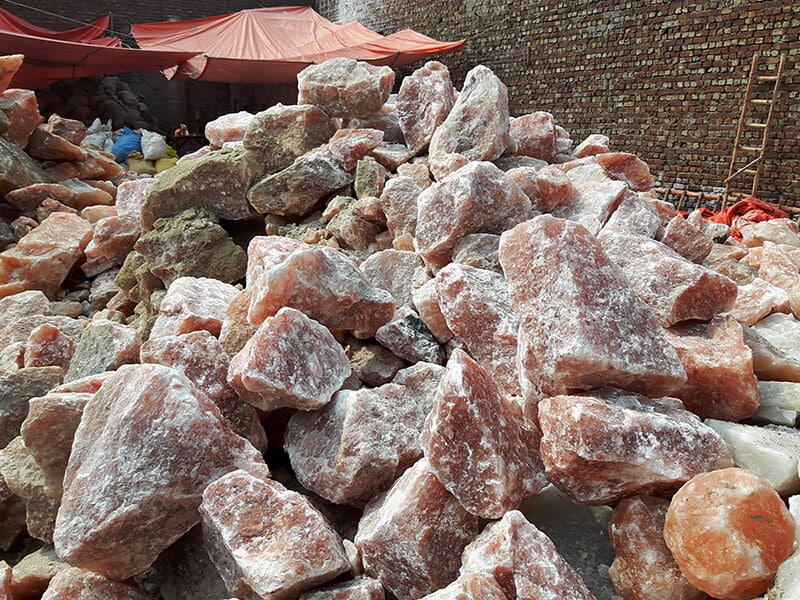
Types Of Salt
There are many types of salt around the world. Each of them varies in sodium level and uses.
Iodized Salt
Iodized salt is a mixture of a famous salt in cooking – table salt and a trace amount of sodium iodine or potassium iodine. Most products in grocery stores are iodized salt.
It comes from salt deposits underground and is heavily processed with calcium silicate to prevent clumping. Table salt has a fine texture, making it easier to dissolve in foods. It gives off a slightly bitter and metallic taste.
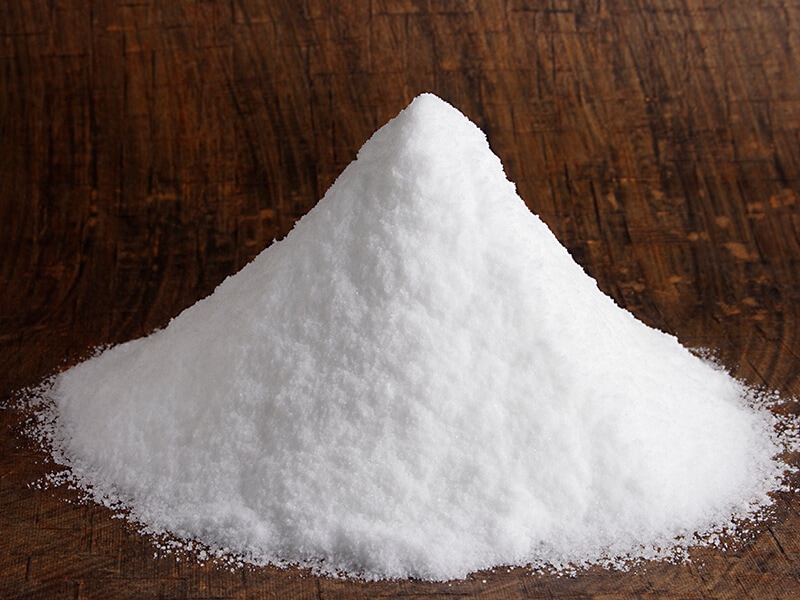
Sea Salt
Sea salt is any salt made by evaporating seawater or saltwater lake water. This variety is less processed than table salt and has an equivalent sodium content.
There are trace minerals in sea salt responsible for its color and flavor. Sea salt can appear in the form of tiny crystals or fine grains.
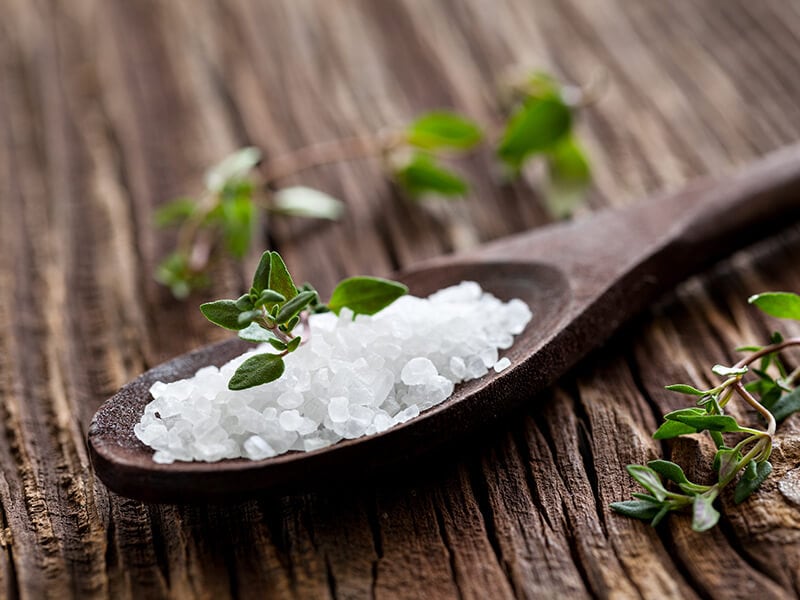
Kosher Salt
This type of salt comes in large flakes or grains. As its name suggests, it is mostly used in kosher foods. Kosher salt has no iodine and anti-caking ingredients with a less sodium content than table salt.
Since this salt has no additives, its flavor is pure and clean. Therefore, many cooks use it to soak meat and poultry.
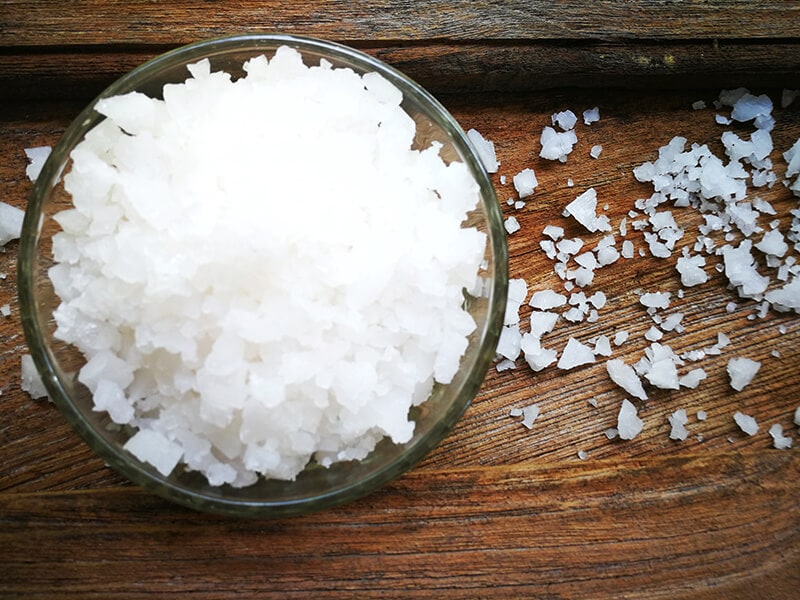
Specialty Salts
Specialty salts are salts that do not belong to the above types, including red salt, Himalayan pink salt, black salt, fleur de sel, Celtic gray sea salt, and more. These salts are different in shape, flavor, and sodium content.
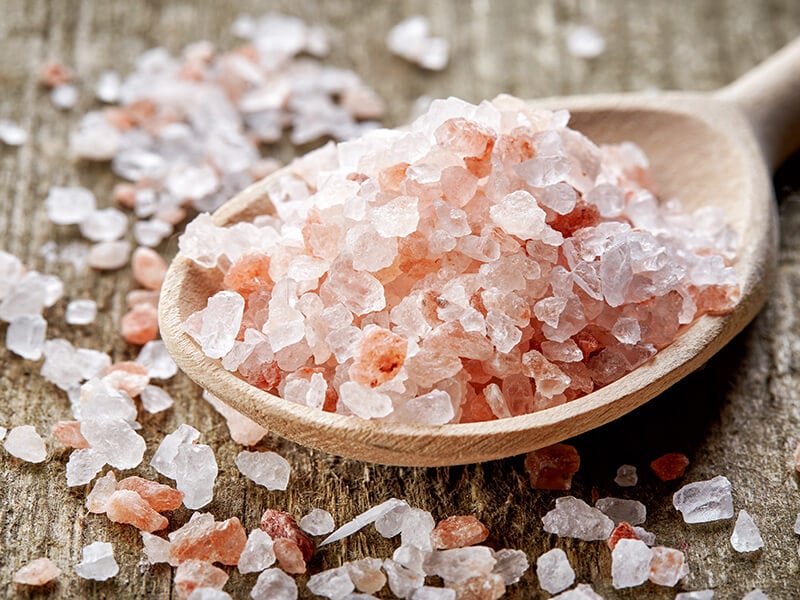
The Necessity Of Salt To the Human Body
It’s true! The human body needs salt to function properly. You may mistake salt and sodium, but they are not the same. Sodium is an element of salt; it makes up about 40% of salt. 60% remaining is chlorine (3).
Sodium plays a vital role in the operation of muscles and nerves, while chlorine in salt is a crucial element in producing digestive acids. Besides that, salt also brings a many incredible benefits to you through necessary consumption.
Maintain The Work Of The Thyroid
The thyroid in your body needs iodine to work properly. The lack of it can result in enlarged thyroid, fatigue, and constipation (4). Iodine is the ingredient of most salt, so adding sufficient salt to your diet will prevent most of these symptoms.
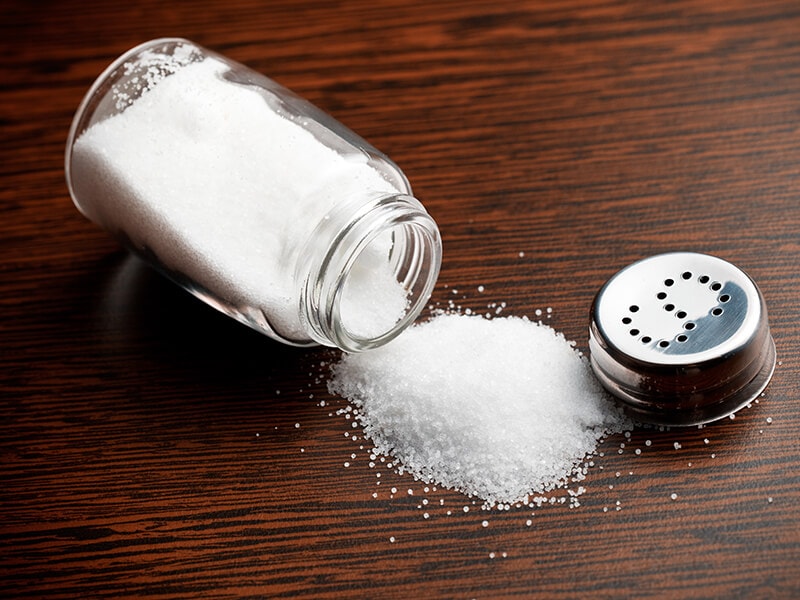
Stay Hydrated
Water is compulsory for your muscles, tissues, and cells. To stay hydrated, you need to balance the sodium and potassium content. Sodium helps keep fluids; if there is too much of it, water will retain in your body.
Meanwhile, potassium will balance this out. These two chemical elements are found in pink Himalayan salt or sea salt like Celtic. If your diet is too low in sodium, you may experience hydration.
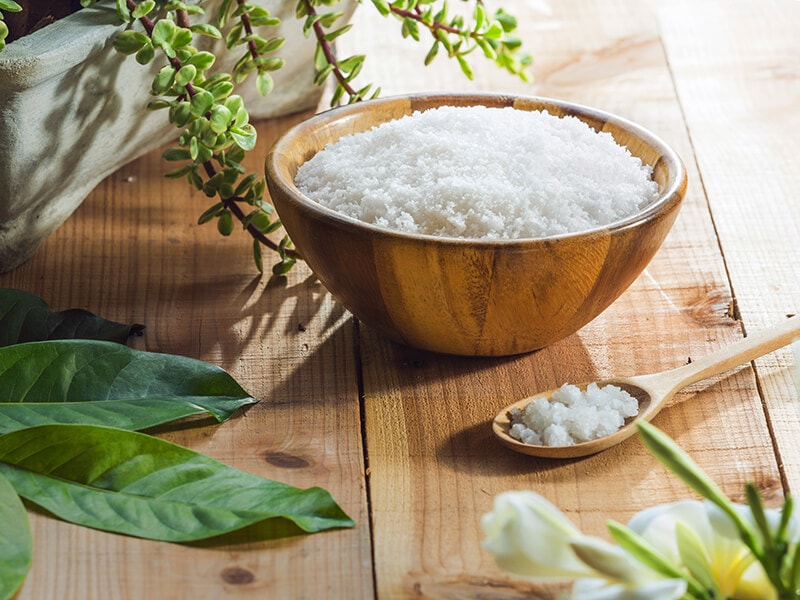
Control Blood Pressure
Sodium relates closely to blood pressure (5). Insufficient or redundant sodium can lead to hypotension and hypertension. They are very dangerous and can lead to dizziness, blurred vision, dehydration, nausea, or fainting.
The above benefits are not everything salt can give you; check out the others here!
The Shelf Life Of Salt Depends On The Types
Here comes the answer that you’ve been waiting for! Salt itself does not expire. It is a natural element that lasts for an indefinite amount of time. However, once it undergoes a refining process, its shelf life deteriorates significantly.
Pure Salt Does Not Expire
Microbes need moisture to grow. Pure salt does not spoil since the water in it has already evaporated. You may be familiar with salt as a seasoning, but it is also a preservative.
Salt can absorb water from the environment. People use salt to draw the water out of food cells. The less water, the less chance for bacteria to thrive.
Other than that, salt can kill most microbes. Sprinkling salt on foods makes bacterial cells experience osmotic shock. It leads to water loss inside the cell and hence, destroys the cells or retard their growth.
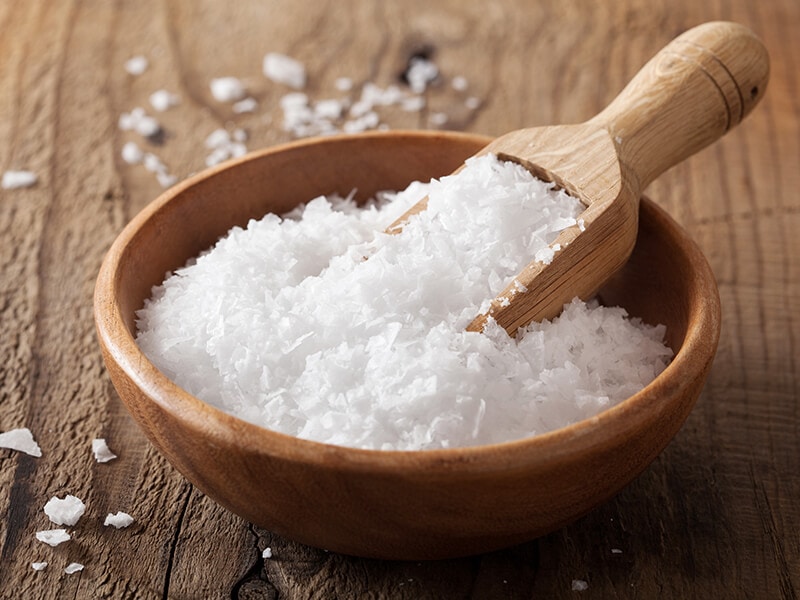
What Reduce The Shelf Life Of Salt
Salt does not expire, but the additives mixed with it do. Many types of salt contain compounds such as spices, flavors or colors, and ingredients to prevent clumping or supplement nutrients.
Table salt, for example, comprises anti-caking agents. They function by absorbing moisture or by creating a water-repellent coating on particles.
These compounds degrade over time with exposure and eventually lead to clumping. As the additives cannot stay fresh forever, your salt also has the same fate.
Fortunately, those added compounds do not spoil and won’t cause you any food poisoning. They just don’t retain top quality. And by then, most of the benefits regular salt brings will fade away.
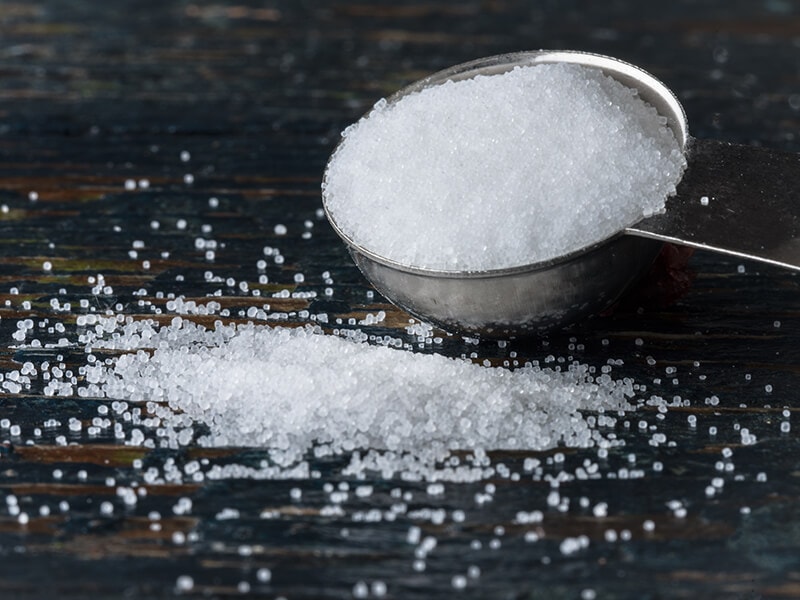
When You Should Discard Salt
Although salt does not really expire, that doesn’t mean you should keep it. If your salt shows these signs, discard it for your sake.
- Salt looks different from when you bought it. It’s rare, but you should toss it right away once it happens.
- Salt smells like other stinky food. Of course, you will not want that smell to linger in the food when you season.
- One of the most obvious signs is clumps. The moisture and degraded anti-caking agents are the culprits. They won’t cause any harm, but shaking them out of the container is inconvenient.
- The presence of bugs is clearly an indicator to throw your salt away. The bugs are dead anyway, but nobody wants to eat buggy salt.
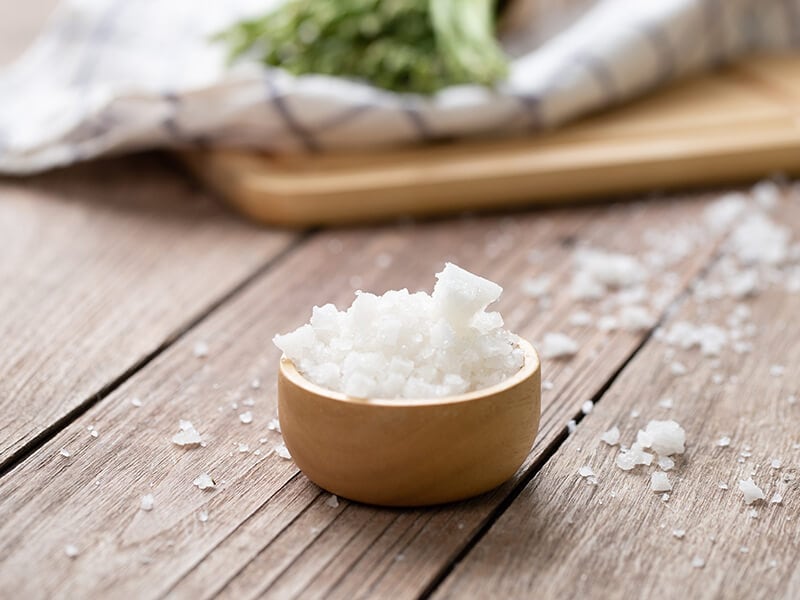
Best-By Date Of Different Salt Types
If salt does not expire, why is there an expiration date on its packaging? The truth is most manufacturers add the date on the label to comply with packaging law. Other than that, when a product has clear packaging, it is more reliable.
Most salt can be used after its expiration date, except for iodized salt or sea salt with water. The date you see on the product is actually the best-before date, which means the time your item is at its best quality.
Salt Types That Last Indefinitely
These salts are usually unrefined salt. They do not undergo heavy treatment. Therefore, they can keep the rich minerals, bringing more health benefits to you.
Non-Iodized Sea Salt
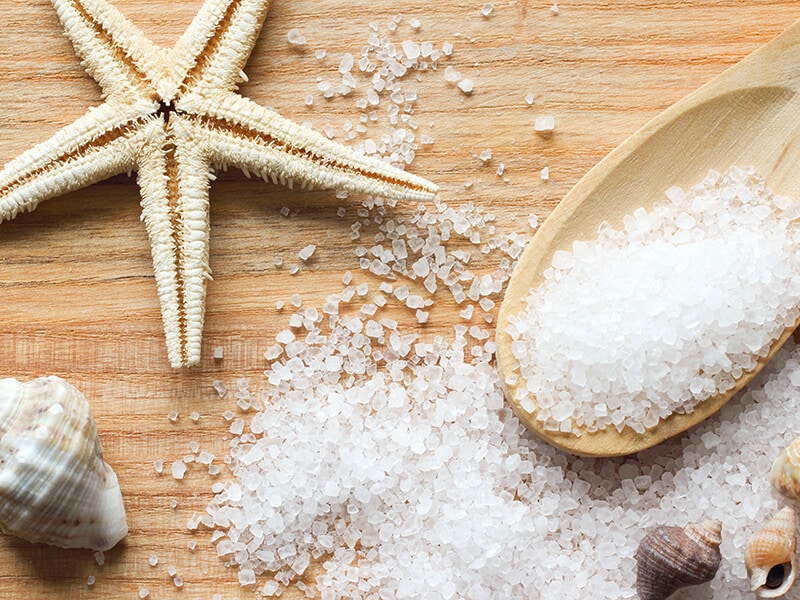
Sea salt is mostly sodium and chlorine, but there are other minerals and impurities. Unrefined sea salt has more than 60 minerals and can last indefinitely.
However, natural sea salt does not contain iodine, which may lead to iodine deficiency. To solve this, people add iodine to the salt to provide nutrients. But it also affects the shelf life of salt. Iodized sea salt only lasts for 5 years.
Himalayan Pink Salt
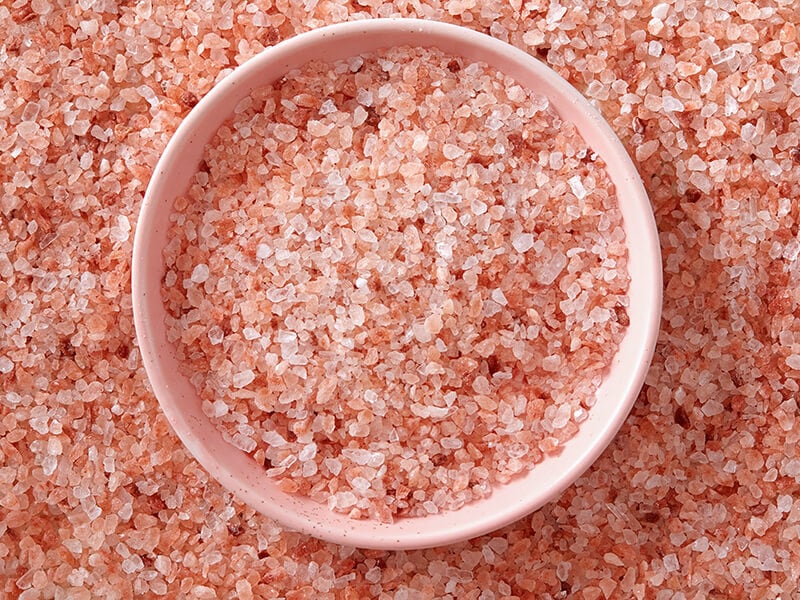
This is one of the purest salts among salt variants. It comes from a large salt mine near the Himalayan mountain range in Pakistan.
Himalayan pink salt contains more than 80 minerals, including potassium, iron, calcium, and magnesium. Some of these elements result in its distinct pink color.
This salt contains iodine, but less than table salt, and the iodine is natural. Himalayan pink salt is also free from additives, preservatives, and dyes. Therefore, as long as you store it somewhere far away from moisture, you can keep it forever.
What makes Himalayan pink salt more expensive than table salt?
Pickling Salt
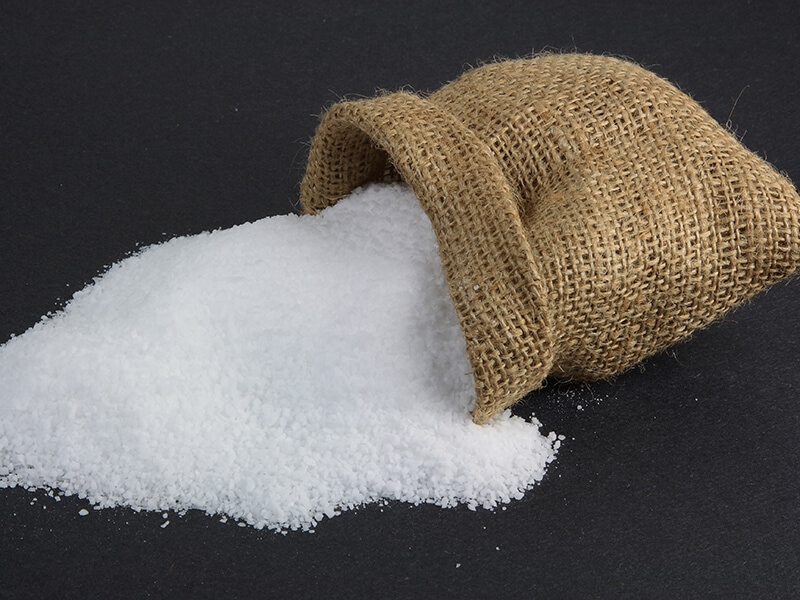
This salt variant is specially made for fermenting, brining, and pickling foods. It not only adds flavor but also allows desirable bacteria to do their work and prevents the growth of others. To make it more dissolvable, manufacturers grind the salt finely.
Pickling salt resembles table salt a lot. But it is iodine-free with no anti-caking agent. Like Himalayan pink salt and non-iodized sea salt, it can stay indefinitely under favorable conditions.
Kosher Salt
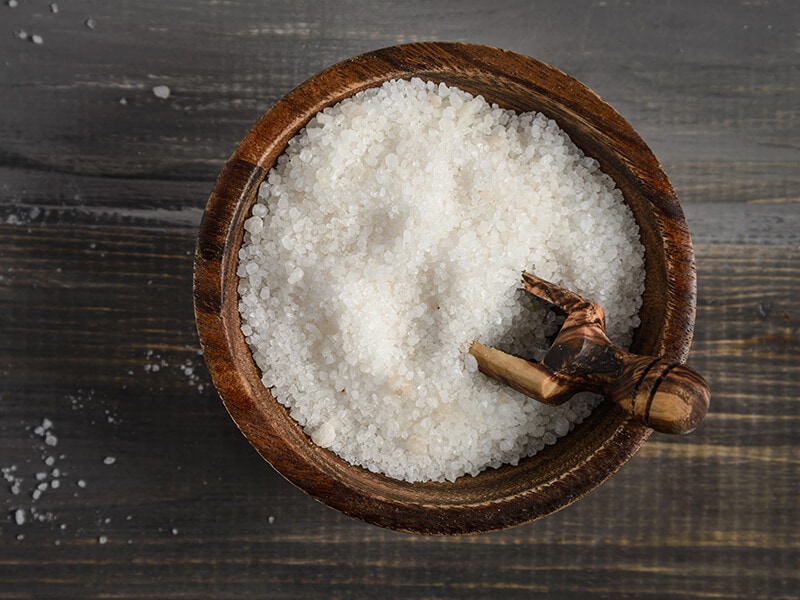
Its name derives from the large grains ideal for the koshering process. The coarse texture helps draw blood from meat and poultry before preparation.
Kosher salt’s flavor is purer and cleaner than table salt. It’s best to use it for spice rubs and marinades. Because of its large texture, you can also spread or sprinkle it easily with your fingers.
This salt is solely sodium chloride with no iodine or anti-caking agent. When properly stored, kosher salt can last a lifetime.
Salts Types That Have Limited Shelf Life
In contrast to the salts above, these types are either moist or treated with spices, colors, flavors, anti-caking agents, and added iodine. The additives have an expiration, so you should use the salt before their best-before date.
The table below summarizes the best-before date of most salt types.
Table Salt
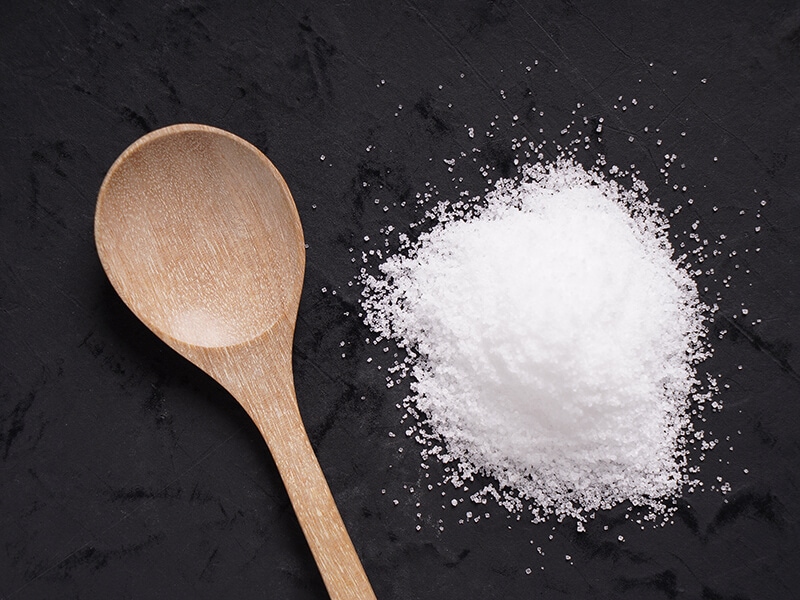
Table salt has a very fine texture due to the grinding process. However, the production also eliminates impurities and minerals. Since the salt is finely ground, it tends to form clumps.
To avoid that, producers mix salt with anhydrous compounds such as magnesium and potassium carbonate. These compounds are anti-caking agents. They will cause a metallic or bitter taste when used in large amounts.
In addition, table salt is also processed with iodine. The iodine stability gradually decreases over time. For these reasons, table salt is best to use within 5 years.
Table salt is not only for seasoning; look at these life hacks.
Fleur De Sel
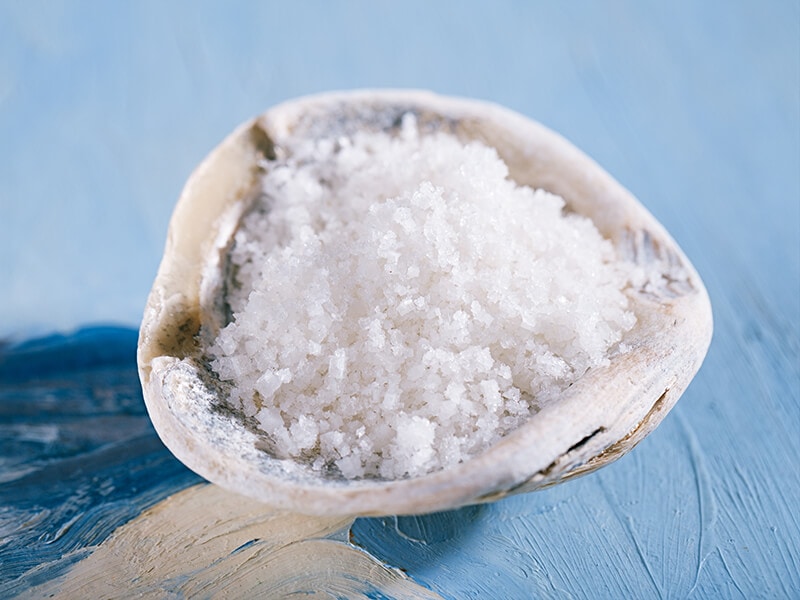
From the Brittany coast, fleur de sel is one of the finest and rarest types of salt in the world. In French, its name means “flower of salt”. When evaporating, it creates a thin flower-like pattern on the surface of seawater.
Fleur de sel does not have additives, yet it contains moisture. So, this type can only be a good choice for short-term storage. Ten years is the amount of time you should keep it.
Black Hawaiian Salt
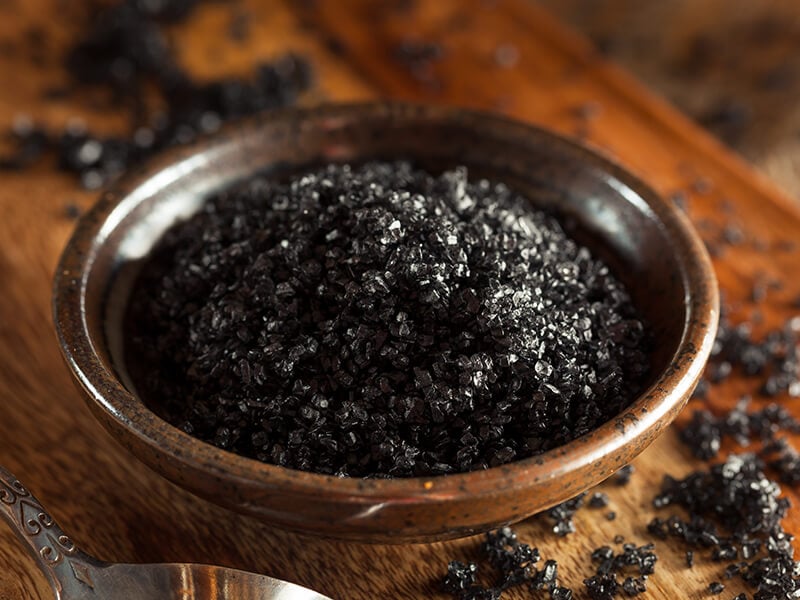
The best thing about this salt is its egg-like flavor. Black Hawaiian salt is a sea salt with activated charcoal, giving it a uniquel black color. It is also famous for its strong sulphuric odor.
A popular way to use this salt is to clean the skin. Charcoal captivates oil and dirt, and you can scrub it on your skin and body to remove dead cells and blemishes.
There is no iodine in black Hawaiian salt. But some manufacturers may want to add iodine to prevent iodine deficiency. Either way, the packaging will indicate that. The shelf life of this salt usually ranges from 3-5 years.
This tutorial will show you how to make soap with black Hawaiian salt.
Red Hawaiian Salt
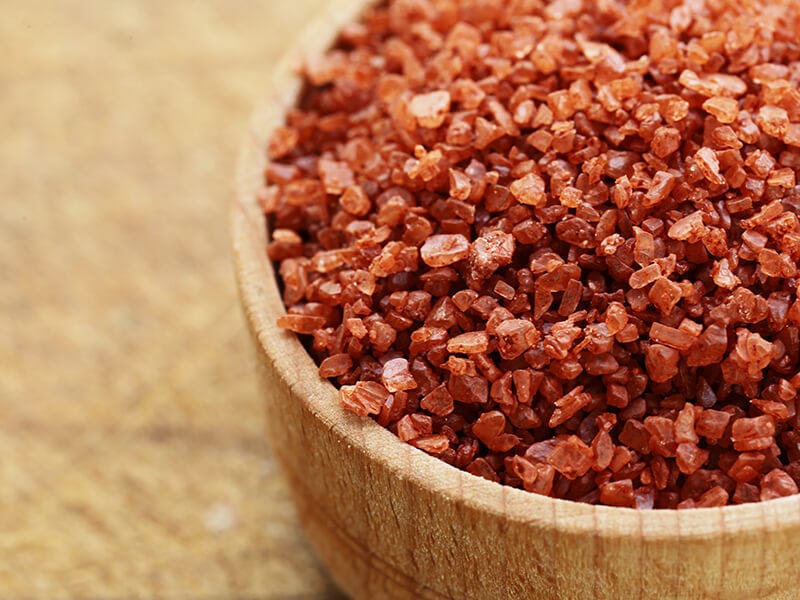
Some people refer to this salt as red alaea salt. It is a type of unrefined sea salt with a red brick color. Red Hawaiian salt provides natural iodine with other minerals that are beneficial to your health.
This specialty salt contains up to 80 natural minerals such as potassium, zinc, calcium, iron, and iodine. The recommended time for red Hawaiian salt is 10 years.
A Guide To Store Your Salt
Storing salt is extremely easy. You don’t have to spend much effort since there is only one rule for keeping all types of salt: Stay away from moisture!
How To Store Salt Properly
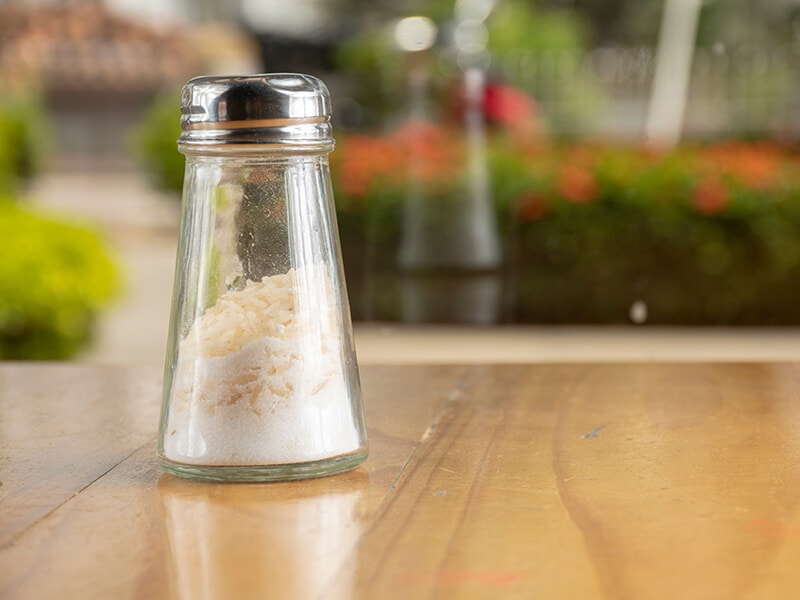
Salt can absorb moisture from the air, so you should not leave it open. Also, food odor can cling to your salt and affect its quality. Therefore, keep the salt in closed containers and store it in a dark, cool, and dry place like your pantry.
And, of course, you will want to keep the salt handy when cooking. Letting the salt in a pantry is quite inconvenient. Therefore, you can pour a small amount of salt into a salt shaker and keep it within arm’s reach.
With iodized salt, you must avoid letting them come to contact with any heat sources. The iodine can degrade significantly in such conditions, which may lead to clumps in your salt. If the salt, unfortunately, forms clumps, you can use your fingers or a fork to break them.
Mistakes When Choosing Salt Containers
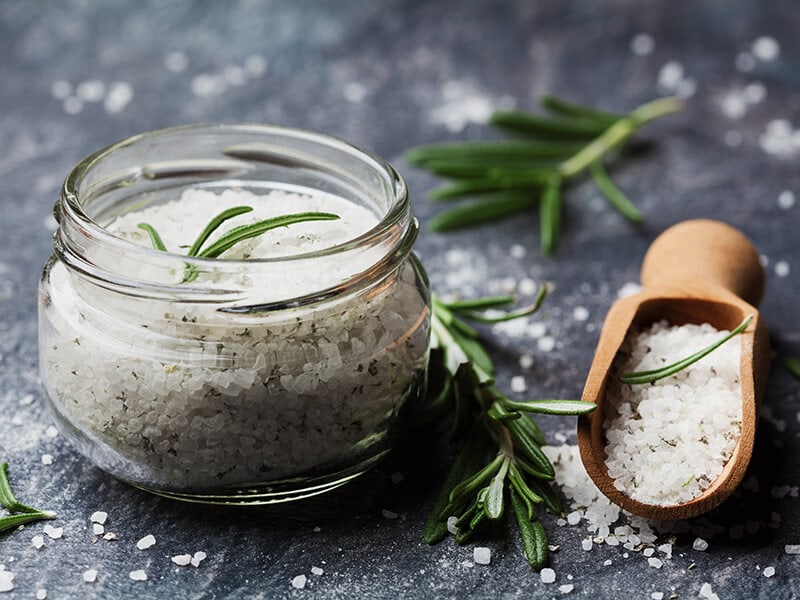
After showing you the right way to store salt, I will list some common mistakes that most people make with salt containers. Hopefully, you are not guilty of any of these!
- Metal: Salt absorbs moisture and corrodes the metal containers, leading to rust and salt contamination.
- Cardboard: Cardboard containers are not tight enough. The moisture and the odor of food can make their way inside.
- Plastic: The chemical of plastic can affect your salt.
Instead of the containers listed above, you can choose glass, ceramic, or clay materials to store your salt as long as you keep them well sealed.
There Is More To Do With Salt Than Just Cooking
Although there is no actual expiration date for salt, there will be a time you find your salt smelly, clumpy, or buggy. It is a waste to throw it all. Why don’t you check out these useful ways to use old salt?
Get Rid Of The Unpleasant Smell
You can use salt as an ingredient to wipe out garlic odor. Add a little salt to lemon juice and rub your hands with it. Then rinse with soap, and the smell of garlic will go away.
Cleaning Kitchen Tools
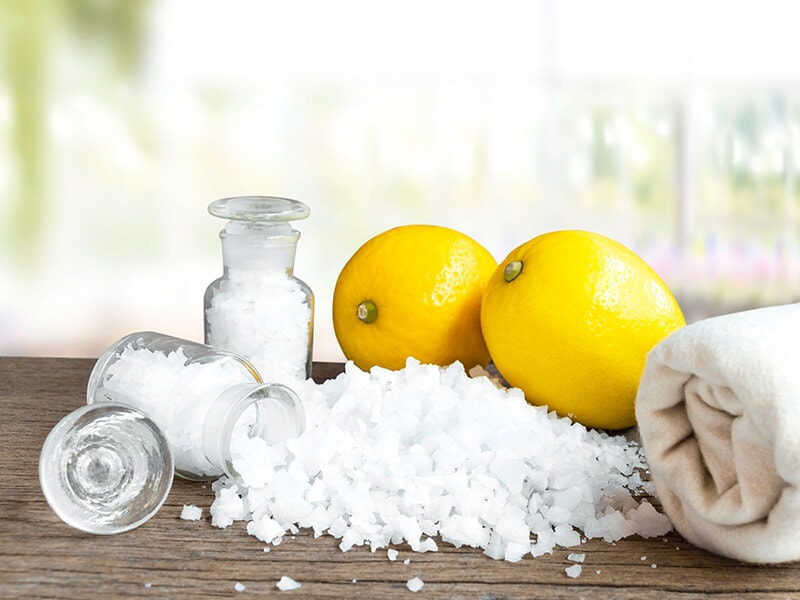
Cooking surfaces can get dirty after constant use. Pour salt directly into these surfaces and use a damp cloth to rub them. After that, wash them with warm water.
Or, you can use old salt to clean the rusty cast iron skillet. Just place a generous amount of salt in the pan and scrub it; you may be surprised by how clean the skillet comes out.
Cast iron skillets can get dirty, so this is how you use salt to clean them.
Help Food Stay Fresh
Fruits like apples or pears usually get brown after peeling. Soaking them in a mixture of cold water and salt will keep their color and help them stay crispy.
Keeping Your Beverage Cold
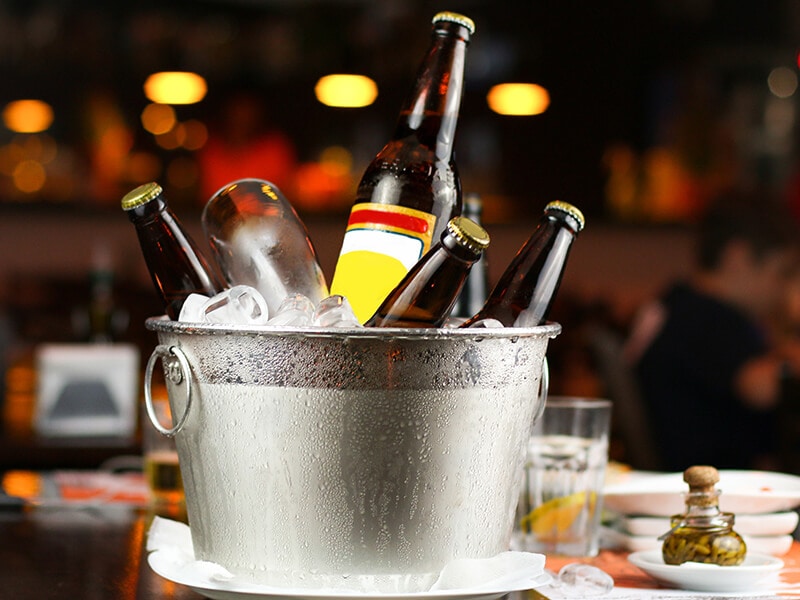
Salt decreases the freezing point of water. So, it can make the ice colder. Place your bottles in a bucket with layers of ice and pour salt in. After 10 minutes, you will have freezing-cold beverages to enjoy.
FAQs
Have you read all the sections above and still need help finding the answer you need? Don’t worry because they are here!
Use Salt Before Its Best-Before Date
Salt is a basic ingredient in every cooking recipe. While many people use it to add some flavor to their dishes, salt is capable of much more. Without its existence, your body will not function properly.
Pure salt does not expire. But there are some processed salts you should use before their best-before date. For long-term storage of salt, you must keep it out of moisture. And even when old salt cannot harm you, it’s better to use it for other purposes than cooking.
So, now you know the shelf life of salt varieties, should you check for your salt packaging? When you come back, leave a comment to let me know how it’s going. And don’t forget to share this with your relatives!
References
- Weather.gov (2019), Salt Water [Online]
- project.geo.msu.edu, Salt mining: mining part
- Webmd.com (2022), Are You Eating Too Much Salt? [Online]
- Healthline.com (2022), What You Need To Know About Hypothyroidism [Online]
- Healthline.com (2018), Daily Salt Intake: How Much Sodium Should You Have [Online]

